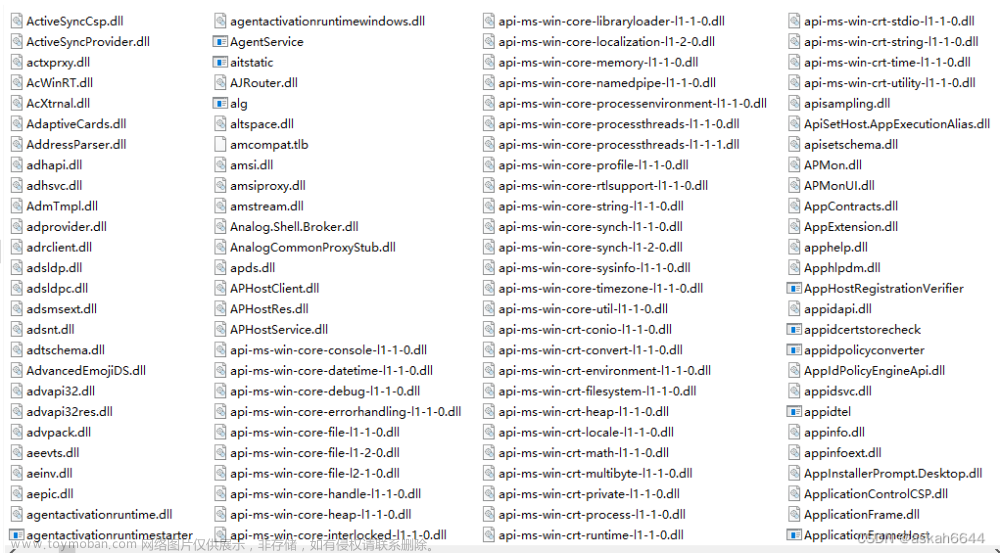(torch_env) root@f123:/mnt/d/work/learning-cuda-trt/learning-cuda-trt-main/tensorrt-basic-1.8-integrate-easyplugin# python gen-onnx.py
对应opset文件夹代码在这里: /root/anaconda3/envs/torch_env/lib/python3.9/site-packages/torch/onnx
inference output =
tensor([[[[3.9281, 5.9852, 3.9281],
[5.9852, 8.9989, 5.9852],
[3.9281, 5.9852, 3.9281]]],
[[[0.7311, 2.8577, 2.8577],
[2.8577, 3.9281, 2.8577],
[2.8577, 2.8577, 0.7311]]]], grad_fn=<MYSELUImplBackward>)
/root/anaconda3/envs/torch_env/lib/python3.9/site-packages/torch/onnx/utils.py:90: UserWarning: 'enable_onnx_checker' is deprecated and ignored. It will be removed in the next PyTorch release. To proceed despite ONNX checker failures, catch torch.onnx.ONNXCheckerError.
warnings.warn("'enable_onnx_checker' is deprecated and ignored. It will be removed in "
==================================call symbolic
Warning: Unsupported operator Plugin. No schema registered for this operator.
Warning: Unsupported operator Plugin. No schema registered for this operator.
Warning: Unsupported operator Plugin. No schema registered for this operator.
graph(%image : Float(*, 1, *, *, strides=[9, 9, 3, 1], requires_grad=0, device=cpu),
%conv.weight : Float(1, 1, 3, 3, strides=[9, 9, 3, 1], requires_grad=1, device=cpu),
%conv.bias : Float(1, strides=[1], requires_grad=1, device=cpu),
%myselu.param : Float(3, strides=[1], requires_grad=1, device=cpu)):
%4 : Float(*, 1, *, *, strides=[9, 9, 3, 1], requires_grad=1, device=cpu) = onnx::Conv[dilations=[1, 1], group=1, kernel_shape=[3, 3], pads=[1, 1, 1, 1], strides=[1, 1]](%image, %conv.weight, %conv.bias) # /root/anaconda3/envs/torch_env/lib/python3.9/site-packages/torch/nn/modules/conv.py:442:0
%5 : Float(3, strides=[1], device=cpu) = onnx::Constant[value= 3 2 1 [ CPUFloatType{3} ]]()
%output : Float(1, 1, 3, 3, strides=[9, 9, 3, 1], requires_grad=1, device=cpu) = onnx::Plugin[info="{\"attr1_s\": \"\0-0\/0/\/,)\0-.\/+0\/./\0--\/.-\/+/\0-/\/.,\/-.\0-,\//0\//*\0--\//)\/,.\0-.\.00\/-/\", \"attr2_i\": [1, 2, 3], \"attr3_f\": 222}", name="MYSELU"](%4, %myselu.param, %5) # /mnt/d/work/learning-cuda-trt/learning-cuda-trt-main/tensorrt-basic-1.8-integrate-easyplugin/gen-onnx.py:38:0
return (%output)
Traceback (most recent call last):
File "/root/anaconda3/envs/torch_env/lib/python3.9/site-packages/torch/onnx/utils.py", line 785, in _export
_check_onnx_proto(proto)
RuntimeError: No Op registered for Plugin with domain_version of 11
==> Context: Bad node spec for node. Name: Plugin_2 OpType: Plugin
During handling of the above exception, another exception occurred:
Traceback (most recent call last):
File "/mnt/d/work/learning-cuda-trt/learning-cuda-trt-main/tensorrt-basic-1.8-integrate-easyplugin/gen-onnx.py", line 80, in <module>
torch.onnx.export(
File "/root/anaconda3/envs/torch_env/lib/python3.9/site-packages/torch/onnx/__init__.py", line 316, in export
return utils.export(model, args, f, export_params, verbose, training,
File "/root/anaconda3/envs/torch_env/lib/python3.9/site-packages/torch/onnx/utils.py", line 107, in export
_export(model, args, f, export_params, verbose, training, input_names, output_names,
File "/root/anaconda3/envs/torch_env/lib/python3.9/site-packages/torch/onnx/utils.py", line 787, in _export
raise ONNXCheckerError(e)
torch.onnx.utils.ONNXCheckerError: No Op registered for Plugin with domain_version of 11
==> Context: Bad node spec for node. Name: Plugin_2 OpType: Plugin
(torch_env) root@f123:/mnt/d/work/learning-cuda-trt/learning-cuda-trt-main/tensorrt-basic-1.8-integrate-easyplugin#
(torch_env) root@f123:/mnt/d/work/learning-cuda-trt/learning-cuda-trt-main/tensorrt-basic-1.8-integrate-easyplugin#
(torch_env) root@f123:/mnt/d/work/learning-cuda-trt/learning-cuda-trt-main/tensorrt-basic-1.8-integrate-easyplugin#
(torch_env) root@f123:/mnt/d/work/learning-cuda-trt/learning-cuda-trt-main/tensorrt-basic-1.8-integrate-easyplugin# python gen-onnx.py
对应opset文件夹代码在这里: /root/anaconda3/envs/torch_env/lib/python3.9/site-packages/torch/onnx
inference output =
tensor([[[[3.9281, 5.9852, 3.9281],
[5.9852, 8.9989, 5.9852],
[3.9281, 5.9852, 3.9281]]],
[[[0.7311, 2.8577, 2.8577],
[2.8577, 3.9281, 2.8577],
[2.8577, 2.8577, 0.7311]]]], grad_fn=<MYSELUImplBackward>)
/root/anaconda3/envs/torch_env/lib/python3.9/site-packages/torch/onnx/utils.py:267: UserWarning: `add_node_names' can be set to True only when 'operator_export_type' is `ONNX`. Since 'operator_export_type' is not set to 'ONNX', `add_node_names` argument will be ignored.
warnings.warn("`{}' can be set to True only when 'operator_export_type' is "
/root/anaconda3/envs/torch_env/lib/python3.9/site-packages/torch/onnx/utils.py:267: UserWarning: `do_constant_folding' can be set to True only when 'operator_export_type' is `ONNX`. Since 'operator_export_type' is not set to 'ONNX', `do_constant_folding` argument will be ignored.
warnings.warn("`{}' can be set to True only when 'operator_export_type' is "
==================================call symbolic
Warning: Unsupported operator Plugin. No schema registered for this operator.
Warning: Unsupported operator Plugin. No schema registered for this operator.
Warning: Unsupported operator Plugin. No schema registered for this operator.
graph(%image : Float(*, 1, *, *, strides=[9, 9, 3, 1], requires_grad=0, device=cpu),
%conv.weight : Float(1, 1, 3, 3, strides=[9, 9, 3, 1], requires_grad=1, device=cpu),
%conv.bias : Float(1, strides=[1], requires_grad=1, device=cpu),
%myselu.param : Float(3, strides=[1], requires_grad=1, device=cpu)):
%4 : Float(*, 1, *, *, strides=[9, 9, 3, 1], requires_grad=1, device=cpu) = onnx::Conv[dilations=[1, 1], group=1, kernel_shape=[3, 3], pads=[1, 1, 1, 1], strides=[1, 1]](%image, %conv.weight, %conv.bias) # /root/anaconda3/envs/torch_env/lib/python3.9/site-packages/torch/nn/modules/conv.py:442:0
%5 : Float(3, strides=[1], device=cpu) = onnx::Constant[value= 3 2 1 [ CPUFloatType{3} ]]()
%output : Float(1, 1, 3, 3, strides=[9, 9, 3, 1], requires_grad=1, device=cpu) = onnx::Plugin[info="{\"attr1_s\": \"\0-0\/0/\/,)\0-.\/+0\/./\0--\/.-\/+/\0-/\/.,\/-.\0-,\//0\//*\0--\//)\/,.\0-.\.00\/-/\", \"attr2_i\": [1, 2, 3], \"attr3_f\": 222}", name="MYSELU"](%4, %myselu.param, %5) # /mnt/d/work/learning-cuda-trt/learning-cuda-trt-main/tensorrt-basic-1.8-integrate-easyplugin/gen-onnx.py:38:0
return (%output)
Done.!
(torch_env)解决:
# enable_onnx_checker=False
更改为:
operator_export_type=torch.onnx.OperatorExportTypes.ONNX_ATEN_FALLBACK
pytorch自定义算子并导出onnx计算图详细代码教程_operatorexporttypes_蛇皮小娃娃的博客-CSDN博客文章来源:https://www.toymoban.com/news/detail-695795.html
import torch
import torch.nn as nn
import torch.nn.functional as F
import torch.onnx
import torch.autograd
import os
class MYSELUImpl(torch.autograd.Function):
# reference: https://pytorch.org/docs/1.10/onnx.html#torch-autograd-functions
@staticmethod
def symbolic(g, x, p):
print("==================================call symbolic")
return g.op("MYSELU", x, p,
g.op("Constant", value_t=torch.tensor([3, 2, 1], dtype=torch.float32)),
attr1_s="这是字符串属性",
attr2_i=[1, 2, 3],
attr3_f=222
)
@staticmethod
def forward(ctx, x, p):
return x * 1 / (1 + torch.exp(-x))
class MYSELU(nn.Module):
def __init__(self, n):
super().__init__()
self.param = nn.parameter.Parameter(torch.arange(n).float())
def forward(self, x):
return MYSELUImpl.apply(x, self.param)
class Model(nn.Module):
def __init__(self):
super().__init__()
self.conv = nn.Conv2d(1, 1, 3, padding=1)
self.myselu = MYSELU(3)
self.conv.weight.data.fill_(1)
self.conv.bias.data.fill_(0)
def forward(self, x):
x = self.conv(x)
x = self.myselu(x)
return x
# 这个包对应opset11的导出代码,如果想修改导出的细节,可以在这里修改代码
# import torch.onnx.symbolic_opset11
print("对应opset文件夹代码在这里:", os.path.dirname(torch.onnx.__file__))
model = Model().eval()
input = torch.tensor([
# batch 0
[
[1, 1, 1],
[1, 1, 1],
[1, 1, 1],
],
# batch 1
[
[-1, 1, 1],
[1, 0, 1],
[1, 1, -1]
]
], dtype=torch.float32).view(2, 1, 3, 3)
output = model(input)
print(f"inference output = \n{output}")
dummy = torch.zeros(1, 1, 3, 3)
torch.onnx.export(
model,
# 这里的args,是指输入给model的参数,需要传递tuple,因此用括号
(dummy,),
# 储存的文件路径
"workspace/demo.onnx",
# 打印详细信息
verbose=True,
# 为输入和输出节点指定名称,方便后面查看或者操作
input_names=["image"],
output_names=["output"],
# 这里的opset,指,各类算子以何种方式导出,对应于symbolic_opset11
opset_version=10,
# 表示他有batch、height、width3个维度是动态的,在onnx中给其赋值为-1
# 通常,我们只设置batch为动态,其他的避免动态
dynamic_axes={
"image": {0: "batch", 2: "height", 3: "width"},
"output": {0: "batch", 2: "height", 3: "width"},
},
# 对于插件,需要禁用onnx检查
# enable_onnx_checker=False
operator_export_type=torch.onnx.OperatorExportTypes.ONNX_ATEN_FALLBACK
)
print("Done.!")文章来源地址https://www.toymoban.com/news/detail-695795.html
到了这里,关于pytorch自定义算子并导出onnx计算图详细代码教程的文章就介绍完了。如果您还想了解更多内容,请在右上角搜索TOY模板网以前的文章或继续浏览下面的相关文章,希望大家以后多多支持TOY模板网!










